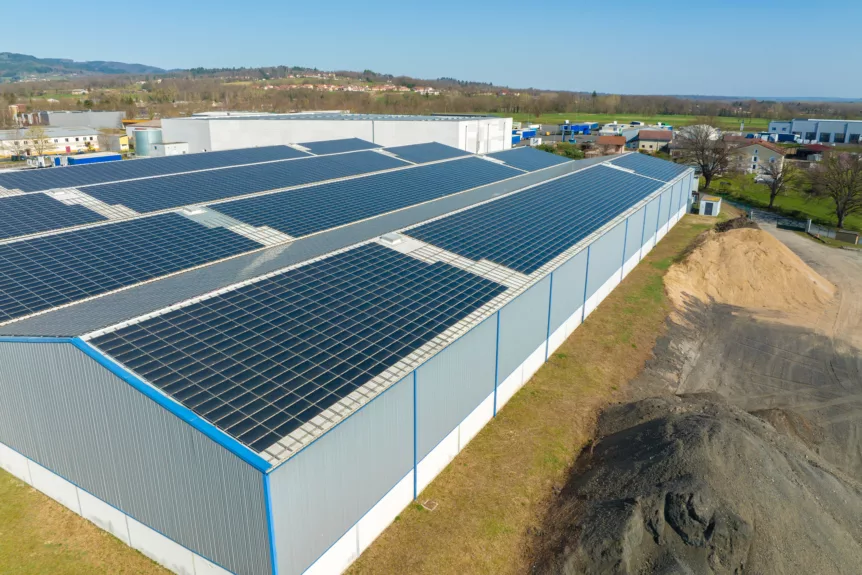Sam Lipman | Director of Solar Programs
Mr. Lipman is responsible for developing shared solar projects, thus furthering ICAST’s work to help underserved communities benefit from clean energy solutions.
Looking at the solar landscape today, we’re seeing innovations in solar and storage laying the groundwork for increased efficiency and reduced costs. Further, since the Inflation Reduction Act (IRA) was signed into law in August of 2022, it has been creating something of a renaissance for these technologies.
Deployment: The Solar Energy Industry Association (SEIA) expects solar deployment to have reached a record-breaking 33GW in 2023. The solar industry is expected to almost triple by 2028 in terms of cumulative deployment. This is in large part thanks to key tax incentives from the IRA. With those incentives and the IRA’s manufacturing provisions, solar deployment is expected to be 38% greater in the next five years than it would have been without the Act.
Manufacturing: Since the beginning of 2022, more than 100 GW of solar module manufacturing capacity has been announced, over 19 G.W. of which are already under construction. Since the IRA’s signing, companies have announced billions of dollars of investment in clean energy manufacturing projects, including $14.4 billion in 27 storage projects and $9.6 billion in 38 solar projects. Such projects will benefit the industry by increasing supply chain reliability, creating jobs, and catalyzing more investment.
Unfortunately, the potential and the optimism must be tempered with some reality. Key factors could negatively impact or even derail the entire Act.
Confusing Rules and Regulations and Lack of Guidance: For example, we will use some IRA requirements for the Investment Tax Credit’s Domestic Content Bonus. ICAST has been working to understand how we can leverage the bonus credit for our work. The IRA covers manufacturing processes, but assembly processes are not, which creates an opportunity for blurriness. Things become complicated with the Adjusted Percentage Rule, which determines project qualification by calculating and dividing the domestic manufactured products and components cost by the total manufactured products cost for a percentage that will either qualify or disqualify a project.
Domestic Politics: If Republicans take control of the House and the Senate this election season, efforts to repeal certain IRA provisions will likely increase. Unfortunately, there is a real possibility that some new funding resources could disappear almost as quickly as they arrived.
A Restrictive Local and State Regulatory Environment: Many current laws have hindered the development of renewable energy by creating barriers to entry or imposing restrictions on using renewable energy sources. For example, some states have regulations limiting the size of solar panel installations, imposing fees on solar users, or requiring utilities to purchase energy from non-renewable sources, disincentivizing the development of renewable energy. Further, barriers to P.V. adoption continue to pose challenges for local governments.
Transmission Constraints: According to Deloitte, insufficient capacity drove up congestion costs by 72% in 2022 over the previous year to $20.8 billion. Interregional and regional transmission would need to more than double and quintuple, respectively, to meet high clean energy growth projections by 2035. Moreover, the current energy grid structure may hinder modernization efforts. The energy grid in the U.S. is composed of thousands of separate entities, including utilities, regional transmission organizations, and independent system operators, making it challenging to coordinate and implement a cohesive modernization plan. Additionally, the regulatory framework for the energy grid is complex, with federal and state agencies overseeing different aspects of the grid, which can create confusion and delays in decision-making.
Lack of Domestic Raw Materials and Geopolitical Events: The U.S. Geological Survey’s periodic Mineral Industry Survey reports the “net import reliance” for various minerals each year. In 2023, the U.S. produced 54% of the copper it consumed, 43% of the nickel, only 23% of zinc, and 33% of the cobalt. All these materials are used in solar and/or storage components, and the U.S. currently has excess dependence on foreign nations. Compounding the issue are recent geopolitical pressures like the COVID-19 pandemic, which have revealed significant supply chain vulnerabilities. Challenges like these contribute to supply chain issues that delay projects by up to two years. More manufacturing in the U.S. is key, as is diversifying the U.S.’s sources for raw materials.
Lack of a Trained Workforce: According to SEIA, the number of jobs in the solar industry grew from 93,000 to 230,000 between 2010 and 2021, and the White House shared an estimate that in the IRA’s first year, its clean energy and climate provisions created more than 170,000 clean energy jobs. An analysis from B.W. Research holds that the IRA will produce 537,000 additional jobs over the next decade.
The job growth will put a strain on an already short labor supply. Solar companies have found it difficult to hire qualified workers, and solar installers have also faced a tight labor market and competition with related industries, such as construction. In 2022, the Interstate Renewable Energy Council found during its annual Solar Jobs Census that 44% of solar industry employers said it was “very difficult” to find qualified applicants—the highest such percentage ever recorded in the Solar Jobs Census.
Read What We’re Reading:
- Deloitte: 2024 Renewable Energy Industry Outlook
- nexamp: the Future of Solar Energy: Trends and Predictions for 2024
- SEIA: Solar Industry Research Data
- SEIA: Solar and Storage Supply Chain Dashboard
- SEIA: U.S. Solar Workforce Fact Sheet
- Wood Mackenzie: U.S. Energy Policy Faces Political Risk
- DOE: Solar Power in Your Community (energy.gov)
- White House Fact Sheet: Inflation Reduction Act – One Year In
- White House Fact Sheet: Securing a Made in America Supply Chain for Critical Materials

